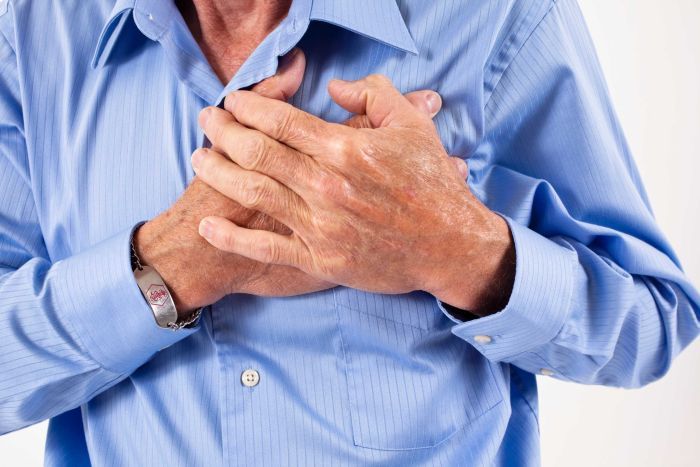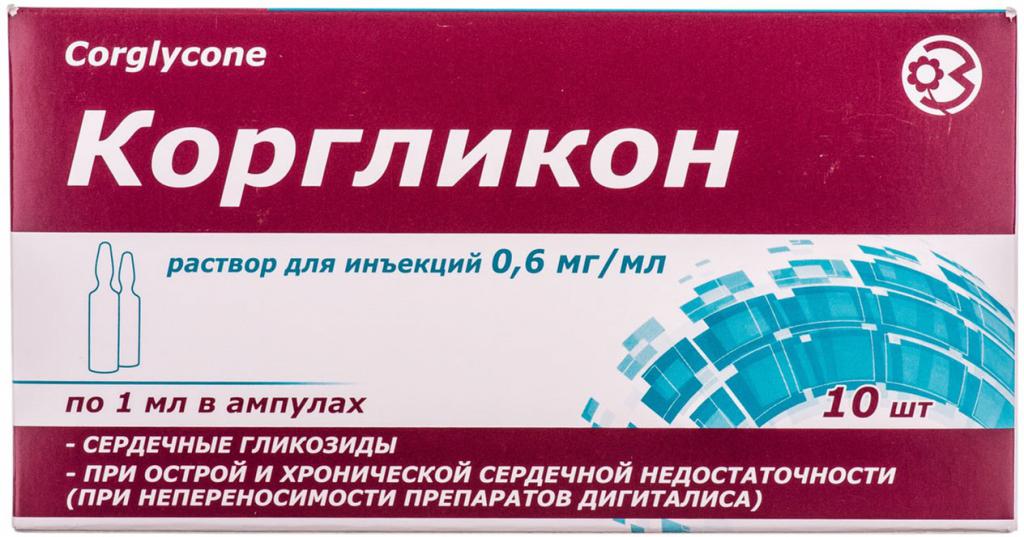Atherosclerotic cardiosclerosis is the diffuse development of connective scar tissue that occurs in the myocardium (the main muscle layer of the heart), which appears as a result of damage to the coronary arteries. The disease is serious, and every person suffering from it should be observed by a cardiologist. But its presence is not a verdict if symptoms are identified in time and treatment is started. However, the topic is important, so you should pay a little more attention to its consideration.
Pathogenesis
Atherosclerotic cardiosclerosis never forms on its own. It always occurs due to metabolic disorders and ischemia (IHD) occurring in the myocardium. It is because of this that the slow development of dystrophy and atrophy begins, as a result of which muscle fibers die. Then, in their place, patches of necrosis and small scars form. Due to the death of receptors, the sensitivity of myocardial tissues to oxygen decreases, and this causes the further progression of coronary heart disease.
Atherosclerotic cardiosclerosis is characterized by a long course and diffuse spread. As it progresses, compensatory hypertrophy develops. Then there is a dilatation of the left ventricle, signs of heart failure become more and more obvious.
It is important to make a reservation that pathogenetic mechanisms differ. Therefore, cardiosclerosis is ischemic, post-infarction and mixed. If we talk about etiology, then distinguish between myocarditis, postinfarction, atherosclerotic and primary species.
Causes and course of the disease
Cardiosclerosis develops in all cases due to atherosclerotic lesions of the coronary vessels, through which myocardial blood supply is carried out. A provoking factor is a violation of cholesterol metabolism. It is he who is accompanied by an excessive deposition of fat-like substances in the inner lining of the vessels.
How quickly atherosclerotic cardiosclerosis develops depends on three factors:
- The presence of arterial hypertension. It is manifested by persistent high pressure from 140/90 mm RT. Art. and higher.
- Propensity for vasoconstriction. This is called narrowing of the lumen of blood vessels, arteries in particular.
- Excessive intake of high-calorie, fat-saturated foods.
Under the influence of these factors, there is a violation of the permeability of the vascular wall. Subsequently, a plaque consisting of lipids is formed on the inner surface of the vessel. It is she who becomes an obstacle to blood flow, since it blocks the vascular bed.
If the lumen closes by 70%, cardiomyocytes (myocardial cells) lose their ability to contract and conduct impulses due to increased oxygen starvation. As a result, they are rebuilt and die. This is how a scar forms.
Initial Stage: Symptoms
Atherosclerotic cardiosclerosis of the 1st degree is very often not expressed by any signs. An illness can make itself felt only after physical exertion. But in general, for the clinical picture, such manifestations are characteristic:
- Shortness of breath, appearing even after weak physical exertion. As the disease develops, it begins to bother a person even when walking.
- General malaise and feeling of weakness. Over time, these symptoms increase.
- Dizziness and headaches. This may be accompanied by tinnitus. It occurs due to oxygen starvation of brain tissue.
- Heart pain with aching character. It can go in a few minutes or last for hours.
- Angina pectoris. Sharp pains in the heart are given to the left clavicle, arm and shoulder blade.
- Heart rhythm disturbances. They can manifest in atrial fibrillation, extrasystole and tachycardia. In people with cardiosclerosis, the heart rate is often more than 120 beats per minute.
- Edematous syndrome in the feet and lower legs. As a rule, makes itself felt in the evening. It also occurs due to circulatory failure.

Many people do not pay due attention to these manifestations, attributing everything to their excessive employment and increased fatigue. But it is not recommended to ignore the symptoms, because at the initial stage of the disease it is much easier to prevent the occurrence of dangerous complications.
Progressive form
Atherosclerotic cardiosclerosis of the 2nd degree is characterized by an increase in all of the above symptoms and the addition of other, more serious ones. In the future, the following manifestations make themselves known:
- Congestion in the lungs. Symptoms include rapid breathing, pallor of the skin, tachycardia, cold sweat, coughing up blood, overwork and discomfort experienced while lying down.
- An increase in the size of the liver (hepatomegaly). But this is indicated by nausea, indigestion, an increase in the abdomen in volumes, heartburn.
- Accumulation of fluid in the abdominal cavity (ascites). A feeling of fullness and heaviness appears in the abdomen, discomfort is also accompanied by belching, flatulence, swelling of the legs.
- Inflammation of the pulmonary and parietal pleura (pleurisy). It is manifested by chest pain and a painful cough.
Also, the atrioventricular and intraventricular blockade develops later, peripheral edema appears , dizziness becomes frequent, and memory worsens significantly.
Diagnostics
Talking about the symptoms and causes of atherosclerotic cardiosclerosis, it is also worth discussing how the diagnosis of this disease is carried out.
First of all, the doctor gets acquainted with the medical history. In the vast majority of cases, people who have noticed symptoms of atherosclerotic cardiosclerosis have a history of arrhythmia, myocardial infarction, coronary heart disease, etc.
After that, the doctor examines the patient. And then sends it to the following procedures:
- ECG. It is necessary to detect heart failure, myocardial hypertrophy and the presence of scar tissue on it.
- Blood chemistry. With its help, it is possible to detect beta-lipoproteins and elevated cholesterol in the blood.
- Echocardiogram. This procedure will detect violations in myocardial contractions.
- Bicycle ergometry. This research method helps to identify the degree of myocardial muscle dysfunction and ventricular reserves.
But this is not all the procedures that a person may have to go through. Rhythmocardiography, coronography, MRI, polycardiography and ventriculography are also often prescribed. Another person can be sent to diagnose atherosclerotic cardiosclerosis for ECG monitoring. And to clarify the presence of effusion, ultrasound of the abdominal and pleural cavities and chest x-ray are performed.
Drug treatment
After confirming the diagnosis of atherosclerotic cardiosclerosis, a person is prescribed therapy. As a rule, a complex of medicines, the use of which is necessary to eliminate the symptoms of the disease and normalize well-being, is as follows:
- Cardiac glycosides: Korglikon and Digoxin. They improve blood circulation, normalize heart rate and pressure, and reduce the volume of circulating blood.
- Nitropreparations: Nitrosorbide and Sustak. They improve microcirculation, increase myocardial contractility and dilate blood vessels.
- Vasodilators: Molsidomin. Positive effect on the elasticity and strength of blood vessels.
- Calcium Antagonists: Amlodipine. Reduces the frequency of contractions and dilates the arteries.
- Cytoprotectors: Mildronate and Preductal. Improve myocardial contractility and metabolism, restore the function of cardiomyocytes.
- Activators of potassium channels, for example, Nicorandil. Reduce blood pressure, increase the elasticity of blood vessels and expand them.
- Beta-blockers: Metoprolol and Atenolol. Normalize heart rate, reduce the frequency and strength of heart contractions, increase periods of myocardial relaxation.
- Antithrombotic agents: Aspirin and Ticlopidine. Prevent blood clots and platelet clumping.
- Statins: Atorvastatin and Lovastatin. Blood cholesterol is normalized and the formation of new atherosclerotic plaques is prevented.

It should be noted that if a person has concomitant diseases and risk factors (arterial hypertension, for example, or diabetes mellitus), the doctor prescribes the use of drugs that maintain blood glucose levels, as well as diuretics and antihypertensive drugs.
Alternative Medicine Methods
They should also be addressed. The possibility of treating atherosclerotic cardiosclerosis with folk remedies must be discussed with your doctor, perhaps there is no need for it. But in general, the following recipes are most popular:
- Mix the fruits of caraway seeds (1 tsp) and the root of the hawthorn (1 tbsp. L.), Pour boiling water (300 ml), let it brew overnight. Strain in the morning. Drink throughout the day in equal portions for 5 receptions.
- Mix the leaves of the small periwinkle (1.5 tsp), the herbs of the white mistletoe (1.5 tsp), the flowers of the hawthorn (1.5 tsp) and the yarrow grass (1 tbsp). Pour boiling water (300 ml) in one spoon of the mixture and let it brew for 1 hour. The resulting volume to drink in 4 doses.
- Combine goose cinquefoil (30 g), fragrant rue (30 g), lily of the valley flowers (10 g) and lemon balm (20 g). Take 1 tbsp. l Collect and pour a glass of boiling water. Insist for 1 hour, then strain. Drink three times a day before meals for 1 tbsp. l
- Grind elecampane (300 g), put in a glass container and pour vodka (500 ml). For 14 days, send to a cool place and strain. Drink three times a day for 30 grams, diluting in a small amount of water.
- Fruits of prickly hawthorn (30 pieces) pour a glass of boiling water. Let it brew. Berries can be suppressed for greater effect. Do such an infusion daily.
- Buckwheat flowers (1 tbsp. L.) Brew boiling water (500 ml) and let stand for 2 hours. Then strain. Drink three times a day for 1/2 cup, be sure to warm.

Also, the use of redcurrant juice, decoction of rowan bark, infusion on its fruits, as well as cranberries, blackberries and bird cherry in any form will help cope with rhythm disturbance in patients with atherosclerotic cardiosclerosis.
Surgical intervention
It must be done if a person with a diagnosis of atherosclerotic cardiosclerosis does not show any improvement after drug treatment.
Depending on the case of the disease, one of the following operations may be indicated:
- Coronary artery bypass grafting. The surgeon creates the path of additional blood supply through the systems of prosthetic vessels (shunts). This helps restore blood flow and eliminate constriction.
- Closed angioplasty of blood vessels. During this operation, the surgeon expands the site of stenosis with a plaque, which is performed by introducing a special balloon. It also helps to normalize blood circulation. And during the operation, stenosis is eliminated.
- Stenting. The surgeon establishes a special framework (stent) in the lumen of the narrowed vessels, due to which it is possible to eliminate stenosis and normalize blood flow.
- Removal of an aortic aneurysm. The specialist excises the defect or carries out its protrusion with bypass or prosthetics.
All of these operations are aimed at eliminating oxygen starvation and obstacles to normal blood supply to the heart.
Diet
Much has been said above about what is atherosclerotic cardiosclerosis. How to treat this disease is also clear, so now a little attention should be paid to considering the principles of diet. It must be observed without fail. With cardiosclerosis, the list of prohibited products looks like this:
- Fried and cholesterol-rich foods (fish, meat, sausage, lard).
- Some vegetables: radishes, onions, beans, parsley, peas, garlic.
- Alcohol.
- Energy and drinks that increase pressure (strong tea, cocoa, coffee).
- Salt.
- Dairy products.
- Butter, animal fats, margarine, cream.
- Hard cheeses.
- The eggs.
- Everything is too sweet, spicy, spicy and salty.
- Confectionery.
Here is a list of recommended foods:
- Fruits and berries: cherries, grapes, tangerines, bananas, apples, kiwi.
- Nuts, but in small quantities.
- Vegetables: potatoes, tomatoes, carrots.
- Cereal and bran bread.
- Skim milk products.
- Hard pasta.
- Rice and buckwheat in milk.
- Freshly squeezed juices from carrots, apples and orange.
- Foods high in phosphorus and calcium.
Preference should be given to steamed and boiled food. As seasonings, ginger, red pepper, horseradish and turmeric are recommended - they can lower blood cholesterol.
You should also switch to fractional nutrition. There are 5-6 times a day with equal intervals between meals. But the latter should be 2-3 hours before bedtime.
Forecast
It is important to note that it is impossible to completely cure atherosclerotic cardiosclerosis. Death to people suffering from them, however, is far from always threatened. And this cannot but rejoice.
With moderate and weak myocardial lesions (approximately 75% of cases), patients can be stabilized through the use of drugs. Many live to a very old age if they regularly undergo examinations by a cardiologist, drink their prescribed medications and adhere to a low cholesterol diet.
If the patient later went to the doctor when extensive, pronounced changes have already occurred in the myocardium, then there will be complications of atherosclerotic cardiosclerosis. Death in such cases occurs in 80%. After surgery, in 90% of cases, the condition of the patients improves significantly, and the symptoms are smoothed out.
No matter what degree the pathology is diagnosed in a person, he will have to constantly be monitored, examined and treated by a cardiologist. This is necessary to prevent the progression of the disease and maintain the quality of life.